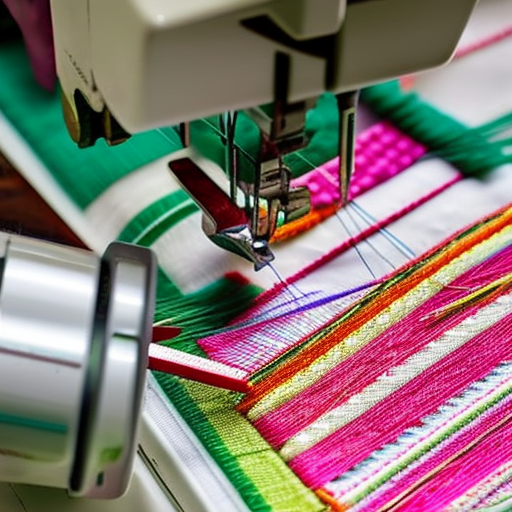
Introduction
Sewing is a creative and useful skill that allows us to create and repair various textiles. However, threading issues often occur while we sew, causing frustration and affecting the overall quality of our work. One common problem faced by sewers is the bunching up of thread. Let’s explore some of the major causes behind this issue and how to prevent it.
Incorrect Thread Tension
One of the primary reasons for thread bunching is incorrect tension. Thread tension refers to the balance between the upper thread (spool thread) and the bobbin thread (lower thread). If the tension is too tight or too loose, the thread can bunch up and create messy stitches. To avoid this, ensure that the tension is set correctly for the type of fabric and thread you are using.
Improperly Wound Bobbin
Another common cause of thread bunching is an improperly wound bobbin. When winding a bobbin, it is essential to do it uniformly and tightly. Uneven winding can lead to inconsistent thread release, resulting in bunching. Always make sure the bobbin is properly wound and inserted into the bobbin case, ensuring smooth thread flow during sewing.
Needle and Thread Mismatch
Using a needle and thread that are not compatible can also lead to thread bunching. The needle size and type should match the thread thickness and fabric weight. A too large or too small needle can cause tension issues and result in thread bunching. Be mindful of selecting the appropriate needle and thread combination for optimal stitching.
Inadequate Thread Path
An inadequate or incorrect thread path can interfere with the smooth flow of thread, causing it to bunch up. Ensure that you follow the correct thread path, as stated in your sewing machine’s manual. Correct threading of the machine, including passing the thread through the tension discs, guides, and the needle, will help prevent thread bunching.
Fabric Issues
The fabric you are sewing can also contribute to thread bunching. Thin and lightweight fabrics are more prone to bunching as they can get pulled into the machine’s mechanisms. To prevent this, use a stabilizer or place tissue paper under the fabric while stitching. Additionally, ensure your fabric is clean and free from any oils or residues that may cause friction and tangling with the thread.
Conclusion
Thread bunching during sewing can be frustrating, but by understanding the various causes, you can take appropriate measures to prevent it. Remember to maintain correct thread tension, wind bobbins properly, use compatible needles and threads, follow the correct thread path, and consider the fabric you are working with. By addressing these factors, you’ll be able to enjoy smooth and hassle-free sewing, resulting in high-quality stitches every time.





It’s usually caused by tension being off balance.
Jenna Worthen: Could be caused by the wrong needle or a bobbin not wound evenly.
It could also be caused by pulling too strongly when sewing– Dana Bly
Dana adds a great point – it could also be caused by sewing too forcefully. This often happens when a fabric is too heavy-weight for the machine, which can put additional stress on the needle. To prevent this from happening, make sure you’re using the correct needle and fabric for your machine.